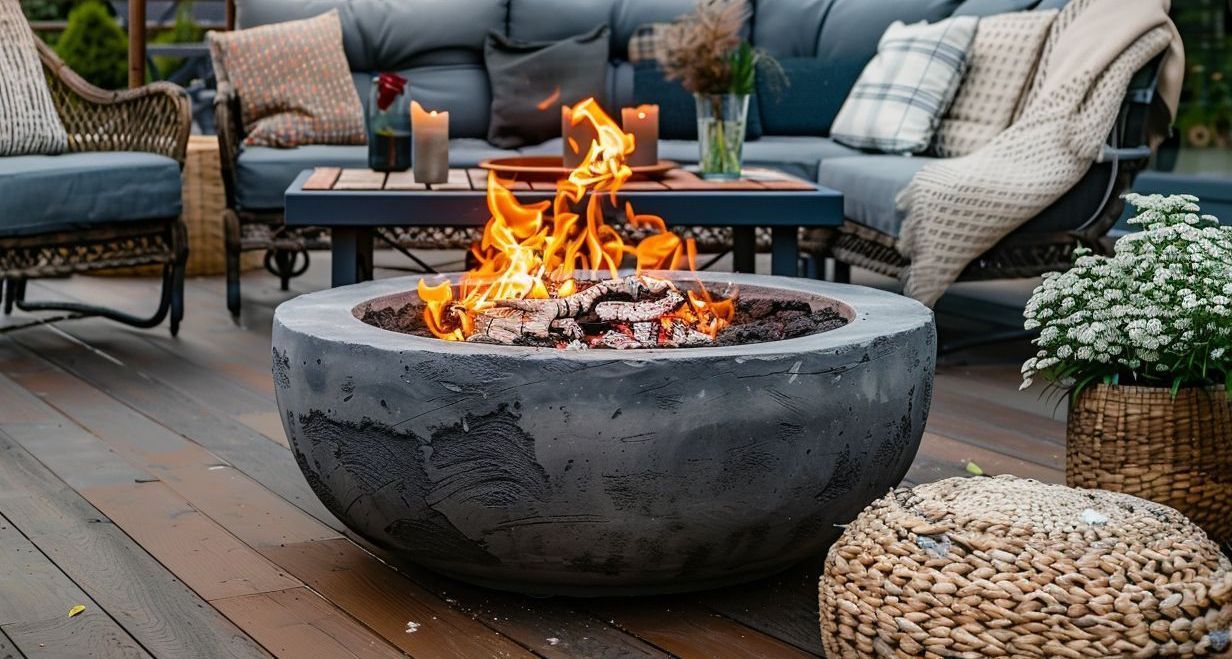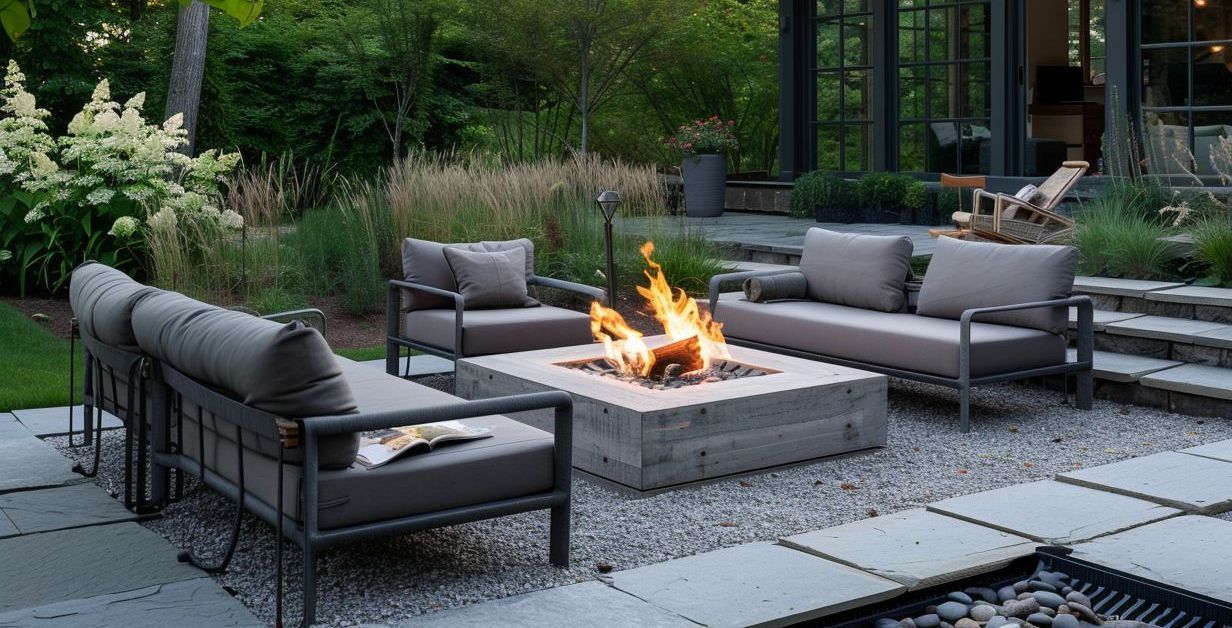How to Design and Build a Cozy Outdoor Patio Fire Pit Area
Picture your patio becoming a comfy retreat that pulls you in, even on chilly evenings. That's where patio fire pits come in, and they're getting more popular. These fire pits serve a purpose beyond just providing warmth; they're invitations to enjoy your patio all year round.
Making your outdoor patio fire pit area can be a fun project. In this guide, we'll show you how to create the perfect space for relaxing and having fun right in your backyard.
Let's talk about outdoor patio fire pits and how they make every season more fun.
Turning Your Outdoor Fire Area / Patio into a Cozy Space

Choose the Right Location
First, you must pick the perfect spot for your outdoor fire pit area . Look for a flat, open space away from overhanging trees, buildings, or anything else that could catch fire. You'll want enough room for seating around of your cozy fire pit, so consider the size of your yard and how much space you have to work with.Decide on the Type of Fire Pit
Consider some things when
picking out a patio fire pit . First, consider how much space you have. You don't desiret the fire pit to fill up all the space and make it seem too crowded.
There are various kinds of fire pits exist. Some use wood to make a fire, while some use propane or gas. Each kind has its advantages and disadvantages.
Gather Your Materials
Once you've decided on the type of fire pit you want to build, it's time to gather your materials. For a built-in fire pit, you'll need things like bricks, concrete, gravel, and a metal fire ring. If you're going with a portable fire pit, you'll just need to purchase the pit itself along with some firewood or propane.Prepare the Site
Before you start building, you must prepare the site for fire pit. Building a built-in fire pit will involve:- Digging a hole for the pit.
- Leveling the ground.
- Possibly adding a layer of gravel for drainage .
If you're going with a portable fire pit, you'll just need to clear the area of any debris and make sure it's on a stable surface.
Build Your Fire Pit
Now comes the fun part – building a fire pit. If you're building a built-in fire pit , start by laying down the first layer of bricks or stones in a circle, leaving space for your cozy fire pit insert.Continue adding layers until a fire pit is the desired height, then fill in any gaps with mortar. Finally, place the metal fire ring inside the pit to contain the flames.
If you're using a portable fire pit , simply follow the manufacturer's instructions for assembly. Once it's put together, place it in the center of your patio area, and you're ready to go.
Comfortable Seating
Make sure your guests have a cozy place to relax. Choose comfortable seating with plush cushions and durable materials. Arrange the seats throughout to your comfortable fire pit area to encourage conversation and connection. Don't forget to include throws or blankets for extra warmth on cooler nights.Lighting
Set the mood with soft lighting surrounding the fire pit area. Hang up string lights lanterns, or light some candles to instantly make it feel warm and welcoming.
Stylish Fire Pit Lounge with Natural Touches
For a stylish fire pit lounge:
- Bring in natural elements to enhance your backyard design.
- Add plants and flowers around the seating area for a lively and fresh feel.
- Choose raw materials such as stone or wood for the fire pit and seating to create a warm and inviting look.
- Consider including a water feature as a central point to create a tranquil and soothing ambiance.
Cozy Additions
Enhance the fire pit and experience with cozy accessories like firewood baskets, fire starters, and roasting sticks. These small touches can make your time by the fire even more enjoyable.
Outdoor Rugs
Outdoor rugs make the space feel cozier and more defined. They add color and texture and help delineate the area around of the fire pit.
Outdoor Kitchen
For those feeling adventurous, consider adding an outdoor kitchen to fire pit area. A simple setup with a grill, sink, and storage can elevate your outdoor gatherings, allowing you to cook and enjoy meals surrounded by nature.
Music
Don't forget the tunes! Whether playing music through a portable speaker or strumming some acoustic tunes, adding music to a fire pit area can enhance the ambiance and turn it into a true gathering spot.
Safety First
Last but certainly not least, it's important to prioritize safety when using your outdoor fire pit area. Make sure to keep a fire extinguisher nearby in case of emergencies, and never leave the fire unattended.
Always fully extinguish the fire before leaving the area or going to bed, and never use flammable liquids to start or revive the fire.
Maintaining Your Fire Pit Safe and Enjoyable All Year Round
Transforming Your Patio into a Cozy Haven
Putting a fire pit on your patio is like giving a touch of magic. This keeps you warm and makes outdoor space extra cozy. Imagine yourself enjoying peaceful evenings, making memories into your outdoor oasis, and sharing stories.
It's time to make that leap and create your peaceful retreat today. So, we will carefully design your new patio space and show you the best layout options. Getting started is easy; just give us a call or
send a quote request .
At KG Landscape, we're committed improving your outdoor enjoyment with top-quality products, services, and even accessories. Reach out us at (763) 568-7251 or
browse our website for more information. Begin turning your patio into a serene retreat with your very own cozy fire pit.










